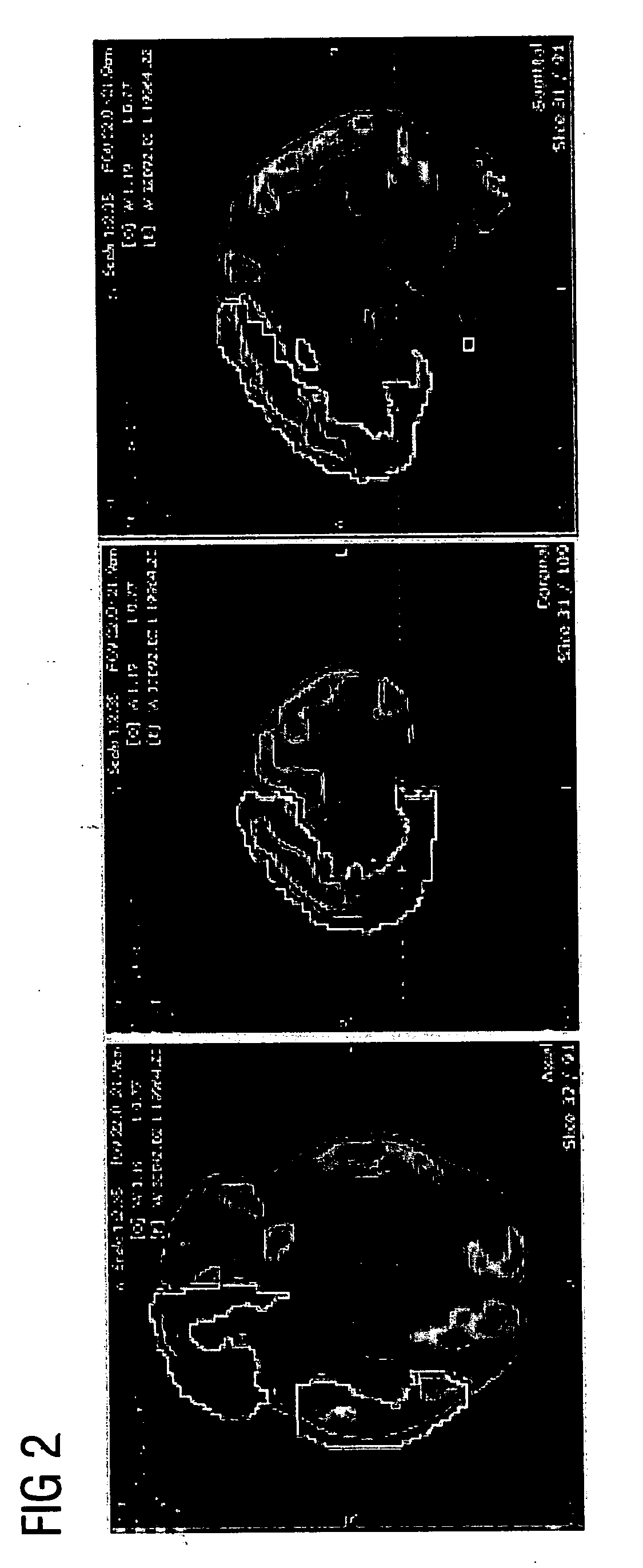ROI-based assessment of abnormality using transformation invariant features
a technology of transformation invariant features and abnormalities, applied in the field of image acquisition, can solve the problems of difficult interpretation of fdg brain scans, gaussian model most likely not very well realized, and illusory accuracy of computed p-values, so as to improve classification performance
- Summary
- Abstract
- Description
- Claims
- Application Information
AI Technical Summary
Benefits of technology
Problems solved by technology
Method used
Image
Examples
Embodiment Construction
[0041] In particular, the invention is described in the context of FDG PET and glucose metabolism, but it can be applied without restriction to PET using tracers other than FDG or to perfusion SPECT as well.
[0042] The method of the invention studies the relationships between features extracted from relevant ROIs in the images. In the examples given, mean intensities in the principal brain lobes are compared to each other and a short image ID is constructed and used to derive population statistics and diagnosis. The overall process is described in the following paragraphs.
[0043] Building on the method of ROI scoring described with reference to NeuroQ, each image is reduced to a vector of average intensities in a pre-determined group of ROIs (about twenty regions are used, essentially covering the main lobes of the cortex). For an image denoted I, v(I) is defined as the corresponding vector of average intensities as measured in the chosen N ROIs. These values are then subject to the...
PUM
 Login to View More
Login to View More Abstract
Description
Claims
Application Information
 Login to View More
Login to View More - R&D
- Intellectual Property
- Life Sciences
- Materials
- Tech Scout
- Unparalleled Data Quality
- Higher Quality Content
- 60% Fewer Hallucinations
Browse by: Latest US Patents, China's latest patents, Technical Efficacy Thesaurus, Application Domain, Technology Topic, Popular Technical Reports.
© 2025 PatSnap. All rights reserved.Legal|Privacy policy|Modern Slavery Act Transparency Statement|Sitemap|About US| Contact US: help@patsnap.com



